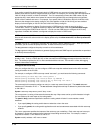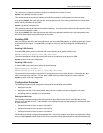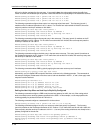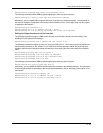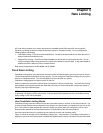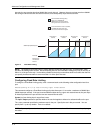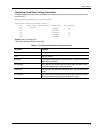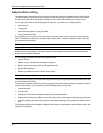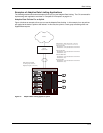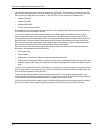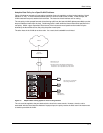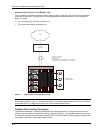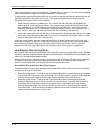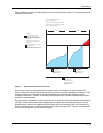
Advanced Configuration and Management Guide
Adaptive Rate Limiting
The Adaptive Rate Limiting enables you to configure rate policies that enforce bandwidth limits for Ethernet traffic.
The features allows you to specify how much Ethernet traffic of a given type a specific port can send or receive,
and also allows you to either change the IP precedence of the traffic before forwarding it or drop the traffic.
You can apply rate policies to the following types of interfaces, in the inbound or outbound direction:
• Individual ports
• Trunk groups
• Virtual interfaces (used for routing by VLANs)
• Layer 2 port-based VLANs
You can apply up to 20 rate policy rules to an interface for inbound traffic and up to 20 more rules for outbound
traffic. The interface can have up to 20 rules for each traffic direction. The device applies the rules in the order
you apply them to the interface.
NOTE: Adaptive Rate Limiting applies only to version 4 IP traffic.
NOTE: On Layer 2 devices and Layer 3 devices, you cannot apply rate limiting to a port if that port belongs to a
VLAN that has a virtual interface. On Layer 3 devices, you cannot apply rate limiting to a port unless that port
already has an IP address configured.
You can configure rate policies for the following types of traffic:
• Layer 3 IP traffic
• Specific source or destination IP addresses or networks
• Specific source or destination TCP or UDP application ports
• Specific MAC addresses
• Specific IP precedence values or Diffserv control points
NOTE: Rate limiting for Diffserv is not supported in the current release.
The rate policies you apply to an interface affect only the traffic types you specify and allows other traffic to be sent
or received without rate limiting.
The rate policy rules allow to specify the action you want the HP device to take depending on whether the traffic is
conforming to the policy. You can specify one of the following actions for each case:
• Forward the traffic
• Drop the traffic
• Change the IP precedence or Diffserv control point and forward the traffic
• Change the IP precedence or Diffserv control point, then continue comparing the traffic to the rate policy rules
• Continue comparing the traffic to the rate policy rules without changing the IP precedence or Diffserv control
point
The following sections provide examples of Adaptive Rate Limiting, an explanation of how the feature works, and
configuration procedures.
4 - 4



